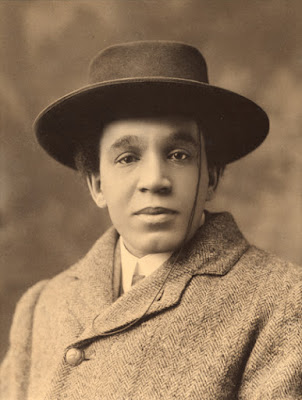is profiled at AfriClassical.com, which
features a comprehensive Works List and a
Bibliography by Dr. Dominique-René de
Lerma,
Lerma,
Henriette
Taylor, the community school coordinator at Historic Samuel
Coleridge-Taylor Elementary, connects students and families with needed
services in Baltimore, Maryland. (Jeff Swicord/VOA)
June 11, 2015 6:59 AM
BALTIMORE, MARYLAND—
Sirens wail frequently outside Bronwyn Mayden’s office, with ambulances and squad cars rushing to the University of Maryland Medical Center half a block away. It’s a trauma hospital, the one where 25-year-old Freddie Gray wound up dying in April from a neck injury sustained in police custody.
Mayden deals with trauma, too, but of a different kind. Assistant dean at the university’s School of Social Work, she’s also executive director of Promise Heights, an academic-community partnership that assists one of West Baltimore’s neediest neighborhoods just over a mile from her office.
Upton-Druid Heights – like the adjacent Sandtown neighborhood where Gray grew up, and like many other poor areas in the U.S. and abroad – cries out for urgent care.
"This is a neighborhood of extreme poverty," said Mayden, 62, who also grew up in predominantly black West Baltimore.
More than half of the neighborhood’s households have incomes below $15,000; three out of five youngsters live in poverty. It has the city’s lowest life expectancy, at 63 years, and among its highest rates of unemployment and incarceration. Sagging, boarded-up row houses mar many streets.
"I could take you in apartments that we’re attempting to raise children in," Mayden said, "that are filled with rats."
The challenges have grown since Gray’s death April 19 sparked sometimes-violent demonstrations against excessive use of force by police.
The beleaguered city now grapples with a soaring homicide rate, the worst in 40 years. May alone brought 43 homicides.
Several West Baltimore residents told The Associated Press they suspect sudden neglect by law enforcement and see more brazen criminal behavior, such as guns flashed on the street. Arrest rates have sunk citywide.
Offsetting challenges
Promise Heights was designed as a counterweight to those burdens.
Launched in 2009, it uses four public schools – two elementary, a middle and a high school – as hubs for delivering services to nurture students, their families and the entire community.
The university and 25 other partners – city and state governments, philanthropies and churches – offer comprehensive, “cradle-to-college-to-career” support. That ranges from enrolling pregnant women in the city’s prenatal care program, to tutoring youngsters, to counseling parents on paying bills or even lining up a burial plot.
One of these community schools is Historic Samuel Coleridge-Taylor Elementary (HSCT).
Mayden placed social worker Henriette Taylor there to coordinate services for its 467 pre-K through fifth-graders and their families. The school sits across the street from McCulloh Homes, a public housing project that served as a backdrop for the gritty HBO series “The Wire.”
Comment by email:
Thank you Bill … I do appreciate that you keep in touch – especially on topics as important as this one. Very best, Hilary [Hilary Burrage]








No comments:
Post a Comment